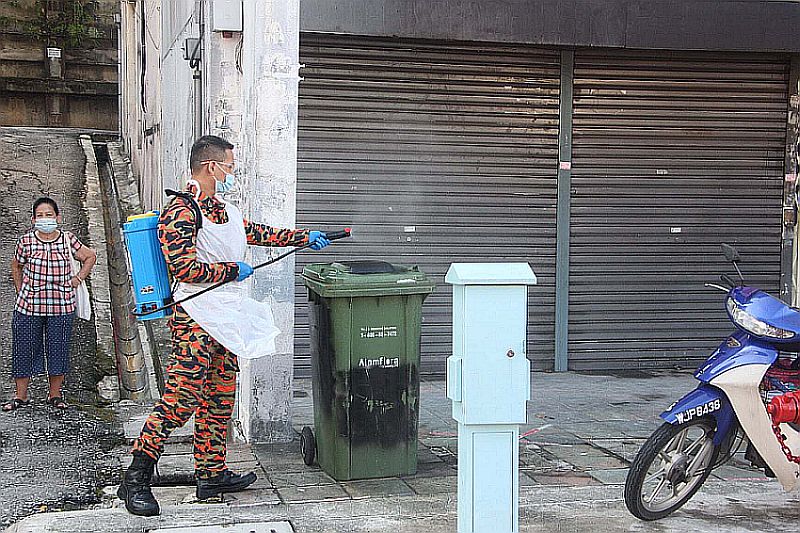KUALA LUMPUR, April 9 — The likelihood of contracting Covid-19 from touching contaminated surfaces is low at less than one in 10,000, announced the United States’ Centers for Disease Control and Prevention (CDC).
In new guidance released on April 5, the CDC said although it is possible for people to contract the coronavirus from surface transmission, the main mode of transmission of the disease is through direct contact with an infected person, droplet transmission (most likely to occur when one is within two metres of an infected person exhaling virus-containing respiratory droplets), and airborne transmission (exposure to smaller virus-containing respiratory droplets that can remain suspended in the air).
Despite preliminary research showing that SARS-CoV-2, the virus that causes Covid-19, could survive for days to weeks on surfaces, the CDC pointed out that experiments on both porous and non-porous surfaces “do not necessarily reflect real-world conditions”. Non-porous surfaces include stainless steel, plastic, and glass.
The CDC cited factors like the viral load in respiratory droplets, ventilation and changing environmental conditions that could remove or degrade the virus, and inefficiencies in transfer of the virus from surfaces to hands and from hands to mouth, nose, and eyes.
“When accounting for both surface survival data and real-world transmission factors, the risk of fomite transmission after a person with Covid-19 has been in an indoor space is minor after three days (72 hours), regardless of when it was last cleaned.”
The new CDC guideline also said that it is sufficient to use ordinary household cleaning products, like soap or detergent, on high-touch surfaces to further reduce the already low risk of fomite transmission in most situations.
The CDC recommended disinfection of surfaces frequently touched by people only if there is a confirmed or suspected Covid-19 case in an indoor setting within the last 24 hours.
There is also little scientific support, said the CDC, for the routine use of disinfectants in community settings, whether indoor or outdoor, to prevent Covid-19 transmission from fomites. It also stressed that fogging or misting is not safe or effective for inactivating the SARS-CoV-2 virus unless properly used.
Early in the Covid-19 pandemic, countries implemented mass disinfection and sanitation exercises in public spaces, while people routinely disinfected surfaces like door handles and items they purchased.
Based on limited data, the CDC found that the risk of infection from entering a space where a person with Covid-19 has been is low after 24 hours. The risk of fomite transmission from any surfaces, after a person with suspected or confirmed Covid-19 has been in an indoor space, is minor after 72 hours (three days).
The American agency also said although there have been a few reports of Covid-19 cases potentially linked to fomite transmission, infections are usually attributed to multiple transmission pathways. It is difficult to definitely prove infection from touching contaminated surfaces, said the CDC, in part because respiratory transmission from asymptomatic people can’t be ruled out.
“The risk of fomite transmission can be reduced by wearing masks consistently and correctly, practising hand hygiene, cleaning, and taking other measures to maintain healthy facilities,” said the CDC.








